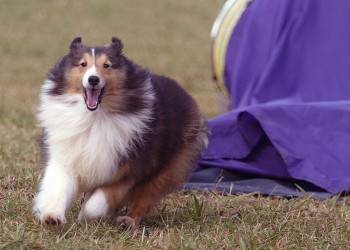Year Published:
Dear Reader
This issue of our newsletter offers new ideas and reports. Comments from readers are appreciated.
Health and Genetics
The following material is intended to raise awareness levels, not to prescribe treatment.
Behavior and Health
 Researchers reported that humans have a natural tendency to look left first when they face each other. Dogs, when looking at humans, do the same, but not when they look at other animals. This, and other findings have led scientists to look at other related behaviors. For example, dogs can read human emotions. They interpret our body language and our moods which other animals cannot. They use barking as their behavior and language to communicate. These behaviors are being studied in Budapest, Hungary, by Dr. Alan Makhosi because these behaviors are not found in their wild canine counterparts. Another scientist, in Stockholm, Dr. Kerstin Moberg is studying oxytocin which is known to increase in mothers and their new born babies immediately after birth. Oxytocin increases can also be found in the dog-owner bond relationship. Dr Kerstin found that oxytocin, which is a powerful hormone located in the hypothalamus, helps mothers establish a maternal bond with their babies. Each time she breast feeds her baby there is an oxytocin surge in both mother and baby which produces a feeling of closeness. These peaks in oxytocin (bursts) can also be found in dogs and their owners when the owner touches their dog and looks into their dog's face. Why is this important? In humans oxytocin is known to lower the heart rate and blood pressure and can extend life. People who own dogs and pet them regularly are less likely to have a heart attack, and if they have one, they are 3-4 times more likely to survive it. Pass this finding on to your dog friends.
Researchers reported that humans have a natural tendency to look left first when they face each other. Dogs, when looking at humans, do the same, but not when they look at other animals. This, and other findings have led scientists to look at other related behaviors. For example, dogs can read human emotions. They interpret our body language and our moods which other animals cannot. They use barking as their behavior and language to communicate. These behaviors are being studied in Budapest, Hungary, by Dr. Alan Makhosi because these behaviors are not found in their wild canine counterparts. Another scientist, in Stockholm, Dr. Kerstin Moberg is studying oxytocin which is known to increase in mothers and their new born babies immediately after birth. Oxytocin increases can also be found in the dog-owner bond relationship. Dr Kerstin found that oxytocin, which is a powerful hormone located in the hypothalamus, helps mothers establish a maternal bond with their babies. Each time she breast feeds her baby there is an oxytocin surge in both mother and baby which produces a feeling of closeness. These peaks in oxytocin (bursts) can also be found in dogs and their owners when the owner touches their dog and looks into their dog's face. Why is this important? In humans oxytocin is known to lower the heart rate and blood pressure and can extend life. People who own dogs and pet them regularly are less likely to have a heart attack, and if they have one, they are 3-4 times more likely to survive it. Pass this finding on to your dog friends.
Cancer
This complicated disease is found 10 times more frequently in dogs than people.
 Osteosarcoma - an aggressive tumor of the bone diagnosed in more than 10,000 dogs annually. Despite treatments, most dogs survive less than a year after diagnosis because the cancer spreads through their body. Dr. Daniel Gustafson, of the Colorado State University Flint Animal Cancer Center is testing a newly-developed computer-based model's ability to determine the best chemotherapy protocols for dogs with osteosarcoma, based on the tumor's gene expression signature. I will report on his progress when his results are published.
Osteosarcoma - an aggressive tumor of the bone diagnosed in more than 10,000 dogs annually. Despite treatments, most dogs survive less than a year after diagnosis because the cancer spreads through their body. Dr. Daniel Gustafson, of the Colorado State University Flint Animal Cancer Center is testing a newly-developed computer-based model's ability to determine the best chemotherapy protocols for dogs with osteosarcoma, based on the tumor's gene expression signature. I will report on his progress when his results are published.
 Bladder Cancer - Recently, I met with Dr. Mathew Breen, NC. State Univ. Vet. School, about urothelial Carcinoma which affects an estimated 50,000 dogs each year. According to Dr. Breen, more than 90% of these cases occur in dogs 6 years of age and older. The most susceptible breeds are: American Eskimo, Australian Cattle Dog, Australian Shepherd, Beagle, Bichon Frise, Border Collie, Jack/Parson Russel Terrier, Lhasa Apso, Rat Terrier, Scottish Terrier, Shetland Sheepdog, West Highland White Terrier and Wire Fox Terrier. A test kit can be ordered from the University. The most popular symptom of this cancer is blood in the dogs urine.
Bladder Cancer - Recently, I met with Dr. Mathew Breen, NC. State Univ. Vet. School, about urothelial Carcinoma which affects an estimated 50,000 dogs each year. According to Dr. Breen, more than 90% of these cases occur in dogs 6 years of age and older. The most susceptible breeds are: American Eskimo, Australian Cattle Dog, Australian Shepherd, Beagle, Bichon Frise, Border Collie, Jack/Parson Russel Terrier, Lhasa Apso, Rat Terrier, Scottish Terrier, Shetland Sheepdog, West Highland White Terrier and Wire Fox Terrier. A test kit can be ordered from the University. The most popular symptom of this cancer is blood in the dogs urine.
Low Calorie diets - longer life for dogs
Recent studies found that dogs would age less and live nearly two years longer if they ate less. The 14-year long study by Nestle Purina PetCare Co. involved 48 Labrador Retrievers from seven litters. Dogs were paired off, with one fed 25 % less than its siblings starting at 8 weeks of age. The thinner dogs lived for a median 13 years and had fewer diseases compared to their all-you-can eat partners, which lived for a median 11.2 years. Scientists have long known that calorically restricted rodents live up to 40% longer than usual. One theory is that caloric restriction causes metabolic shifts that affect the rate of aging by slowing down some of the metabolic processes that cause cell damage that leads to disease. The same effect is likely to hold true for humans,
Stick Dog Pedigree Software
 Breeders need pedigrees to help them study the conformation and health of ancestors before deciding which dogs to breed. The Stick Dog Pedigree software produces three pedigrees for these purposes. With a click of the mouse, it will generate the Traditional pedigree with names, titles and certifications, the Stick Dog Pedigree which uses stick figures to code the seven structural traits of conformation, and the Symbols Pedigree which codes health history, carriers and dreaded diseases. A User Manual provides step by step instructions.
Breeders need pedigrees to help them study the conformation and health of ancestors before deciding which dogs to breed. The Stick Dog Pedigree software produces three pedigrees for these purposes. With a click of the mouse, it will generate the Traditional pedigree with names, titles and certifications, the Stick Dog Pedigree which uses stick figures to code the seven structural traits of conformation, and the Symbols Pedigree which codes health history, carriers and dreaded diseases. A User Manual provides step by step instructions.
Choosing the Best Puppy
One study shows that most breeders are wrong 60% of the time when trying to choose the best puppy. These are bad odds when you consider the time and effort used to plan and carry out a breeding. What is needed are certain skills and a reliable method that will reduce error. Now available, a DVD that is proven to help with this problem, "Choosing the Best Puppy."
New Seminars
When new information and scientific findings are reported they are added into our seminars. Our seminars continue to be popular with clubs and breeders because they provide hands on, useful information that you can take home and use. "Structure, Movement and Pedigree Analysis" focuses on learning how to recognize good structure and movement and then shows you how to code what you learn into your pedigrees. "Making of a Super Dog" is new and based on research. In a step by step process students learn how to produce correct breed type and dogs that are healthier, smarter and more trainable with stronger heart beats, greater tolerance of stress and greater resistance to disease. Both seminars use live dogs and show students how to teach their hands to see what their eyes can't. Also included are better ways to use nutrition, the maternal influence, record keeping and management. Knowing more and not guessing makes the difference. Listen to the synopsis of each seminar.
Keys to Success
There are volumes of information available on most subjects, which is why we believe that “Those who don't read have no advantage over those who can't.”

